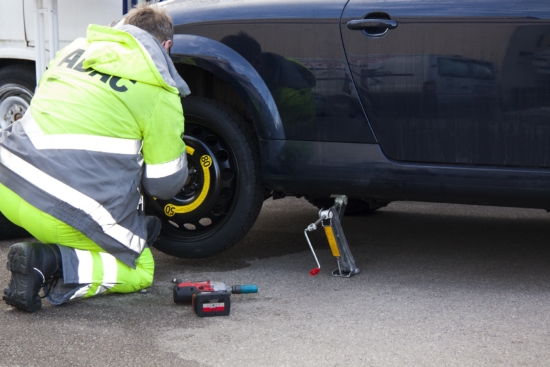Tyre punctures, space savers, sealant solutions and the tyre business
 Spacesavers (pictured) and different types of sealants have become increasingly common over the years (Photo: Pixabay)
Spacesavers (pictured) and different types of sealants have become increasingly common over the years (Photo: Pixabay)
One consequence of car manufacturers seeking to improve their eco scores is that they have taken drastic steps to reduce the weight of the vehicles they produce. With that in mind, spare tyre and wheel assemblies have increasingly been seen as, well, a spare wheel in the life of the average motor. And that’s made many marques call the need for the common-or-garden spare tyre into question.
A few years back What Car conducted a survey of 251 new car models from 31 brands in order to learn what puncture solution came with new cars. The resulting data showed that just 8 per cent come with a full-size spare wheel. Meanwhile, spacesavers were standard on 30 per cent, while 55 per cent came with a tyre repair kit. The remaining 7 per cent were fitted with run-flat tyres. But that was just over three years ago and pandemic- and chip-related production slowdowns aside, the proportion of newer car models entering the national parc has only increased in the interim. In other words, the proportion of cars with something other than a full-size spare is at an all-time high.
Here’s how the subject of spare-tyre replacement has evolved over the years. First came spacesavers, which tyre manufacturers such as Vredestein have made into an additional, niche stream of business over the years. Then came the compressor/sealant combination. But did how do such products impact the replacement market?
Sealants offer a quick DIY solution for leaky or punctured tyres to get cars back on the road and to a place of safety place. Since a common place of safety is a garage, that potentially provides the opportunity for tyre businesses to provide the appropriate permanent solution. However, tyre fitters regularly complain about the additional mess and complexity that sealants bring to the tyre fitting process.
Nevertheless, sealant manufacturers described their products like this: They are…adhesives that are injected directly through the tyre valve to seal any punctures from the inside”. There are two main types of sealing products. Pre-puncture products are used to prevent flat tyres. They are added before the damage occurs and automatically seal punctures when they appear. Post-puncture sealants are injected after the problem arises. The gel fills up the hole so that the tyre can be pumped up and the car can be driven to a safe place or garage. It is important to note that they are only marketed as short-term solutions to the problem and that tyres should be properly repaired or replaced as soon as possible for safety reasons. Again, that point should ensure that sealant usage directs motorists back to their garage rather than away from it.
As we mentioned at the start, if the vehicle doesn’t come with a spare tyre, it should include a compressor for pumping the sealant. Certain products require drivers to apply the sealant first and then inflate the tyre, whereas all-in-one products allow you to do both at the same time. Of course, for take-up to be sustained beyond one usage, it is important that a sealant can easily be removed and won’t damage the tyres. The K2 Tire Doktor 535 ml, Slime, Holts Tyre Weld, Air Seal as well as Michelin and Continental’s respective offerings are all examples. Of those K2, Holts and Michelin’s products consist of an aerosol can-based offer. The idea here is that you don’t need to remove the wheel or use any special tools to fix the leak.
How long does the sealant last?
Sealants don’t fix the tyre forever and are only for emergency purposes. However, some brands claim that their products can keep the tyre airtight for over 100 miles. The durability of the seal will depend on several factors, such as the cause and size of the damage, driving style and environment, and the age of the sealant itself. You should always check the expiry date of the product before application. As products vary, the instructions should always be read, in any case.
How to use a tyre sealant (post-puncture)
Again, the procedure varies depending on the sealant used. But it generally works something like this:
- Make sure that the handbrake has been applied and the passengers have exited the vehicle.
- You will need to locate the puncture. If the wheel is damaged, there’s a rip in the sidewall or the hole is too large, this cannot be repaired with the kit. If you find any glass, nails or other sharp objects stuck in the tyre, it may be better to leave them to avoid making the puncture larger.
- The next step is to set up and connect the repair kit. Depending on the specific application method, you may be required to manually squeeze the product into the component through the air valve. If a compressor is used, it will need to be securely connected to the valve. When applying something like the K2 Tire Doktor, the hose of the can should be screwed into the valve before raising the cap and pressing it in. This should pump and seal the tyre within minutes.
There is no question, that there are fewer full-size spares on the market than ever. This is likely to lead to more break down call-outs serving those perplexed as to what to do when they can a puncture. Those that do know will only have a temporary solution. And those solutions should either point them back to the garage (as in the case of sealant) or cause secondary issues if over-run (such as uneven wear in the case of spacesavers). So, despite the physical mess that sealants have anecdotally brought with them, they also have the potential to bring opportunities with them too.



Comments